(08/04/23) Blog 98 – Happy Easter!
In my 2nd post about Easter eggs, I’m taking a look at the world of vinyl eggs – secrets hidden away in music.
I’ve always been a music fan, and one of the things that I miss with the modern world of digital streaming was the excitement of going into town on a Saturday morning to buy the latest release by my favourite musicians. If there were no new records to buy that week, I would use my money to steadily build up my growing back catalogue of records by my fave artists.
Don’t get me wrong – digital streaming certainly has it’s place, and for many it has opened up a world of music which otherwise would not necessarily be available to them – I’m certainly a fan of streaming tracks. However, to me, the physical article will always be my preferred medium for music. Not because I think it sounds better, or warmer, not because I’m a snooty audiophile who refuses to embrace new methods – no it’s because with digitally streamed music you miss half of the experience.
To me, the audio is only part of the experience, the other part is the artwork of the album sleeve, or (as this post will show) the hidden messages left behind by the artists, the sound engineers, but also by the men and women at the vinyl printing factories.
Iconic Album Art
When you think of many of the classic albums which have been released over the years some of the first images which come to mind are not of the lyrics, or the music, but of the artwork which goes with the release.
Think Dark Side of the Moon by Pink Floyd – you don’t instantly think of the amazing vocals on The Great Gig in the Sky, or the ticking of the clocks at the start of Time – no, I suspect the thing which is in your mind is the iconic prism art work of Storm Thorgerson. The simplistic design of the cover is undoubtedly one of the most recognisable album covers ever.
Now, this album artwork doesn’t contain and Easter Eggs – I just think it’s one of the best albums ever made – I’m just using it to make a point that the artwork is a huge part of the album experience to me.

Album Art Easter Eggs
If you think of the album Velvet Underground & Nico – immediately, I suspect you can now see a banana!
Modern releases of this album still feature the iconic Andy Warhol designed artwork of a slightly ripe banana, but early original releases of this album also held an Easter egg.
The original vinyl versions of the album had a peel-away vinyl sticker as the banana which revealed a delightful lurid coloured banana beneath.

Another Velvet underground Easter Egg is found on the album White light / White Heat, where if you view the album cover under a black-light, the skull tattoo which can be seen on someones’ arm, glows much more brightly.
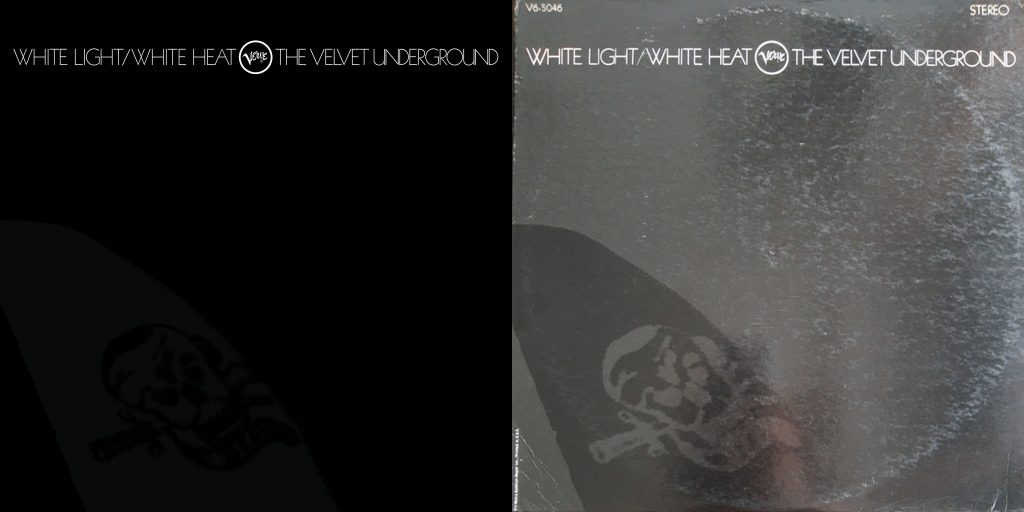
The final album by David Bowie left fans with a lasting set of puzzles…
The artwork for Blackstar features five star segments below the main star which form the word “BOWIE” in stylized letters.
The vinyl version of the cover features the main star as a cutout, revealing the record (with an all-black picture label) beneath. With the record removed, the black paper behind the cutout reveals a hidden picture of a star-field when the foldout sleeve is held up to a light source. It was four months after the release of this album before anyone found the hidden star-field.

Another iconic album with hidden features is the debut Album by American rock band Santana. This album cover features an image of a lion, which on close inspection actually features nine smaller images of faces.

Iron Maiden fans were given a real treat when the album Somewhere in time was released.
Renowned for his detailed artwork, artist Derek Riggs produced a 3ft painting which was used as the art for the cover. This large painting gave Riggs the opportunity to hide multiple eggs for fans to discover in the gate-fold sleeve release.

A small selection of the eggs hidden in the artwork include:
- The Aces High bar – a reference to the bands single “Aces high”
- An image of a Spitfire, from the same song
- A pyramid, which references the bands album “Powerslave”
- A bar called L’Amours, which was a venue the band palyed often at under the name Charlotte and the Harlots – which itself is a reference to another track by the band from their debut album
- A hotel room with a woman bathed in a red light is a reference to the red light district – Charlotte the harlot is a prostitute who appears in a number of the bands songs
- Hammerjacks is another bar which the band used to play
- An image of a falling angel references Icarus from the bands track “Flight of Icarus”
- A reference to Long Beach (california) which is where the band recorded their Live after death album – regarded as one of the best live albums
My all-time favourite album cover however, is the album In through the out door by Led Zeppelin.
The album was the final studio album by Led zeppelin, and was released in 1979. The cover features a scene of a smokey, New Orleans bar with six occupants.
There were six different variants of this album sleeve, with each variant depicting the same bar, but viewed through the eyes of each of the bars occupants.
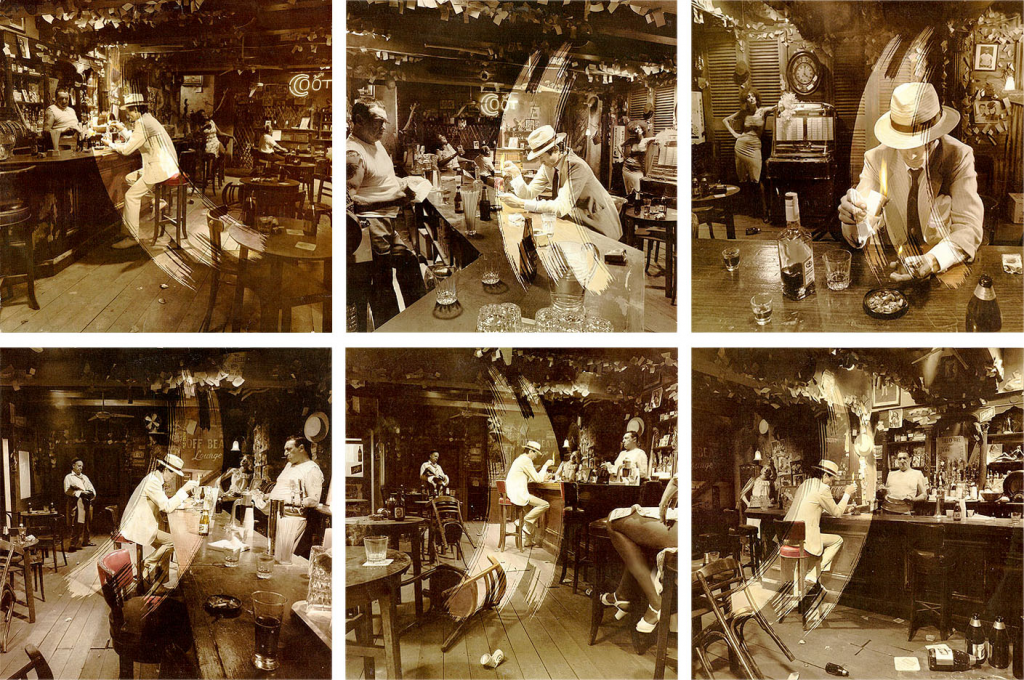
When the album went on sale, it was sold wrapped in a plain paper bag, so the buyer had no idea which version they were getting.

The bar scene images held a clue to a secret held on the inner sleeve of the album.
The bar scene cover was produced with a sepia tint, but had a smear which revealed the colours of the bar.

This clue hinted at the fact that the inner sleeve was able to be coloured with a paint-brush dipped in water. Like the outer sleeve – there were six variants of the inner sleeve.
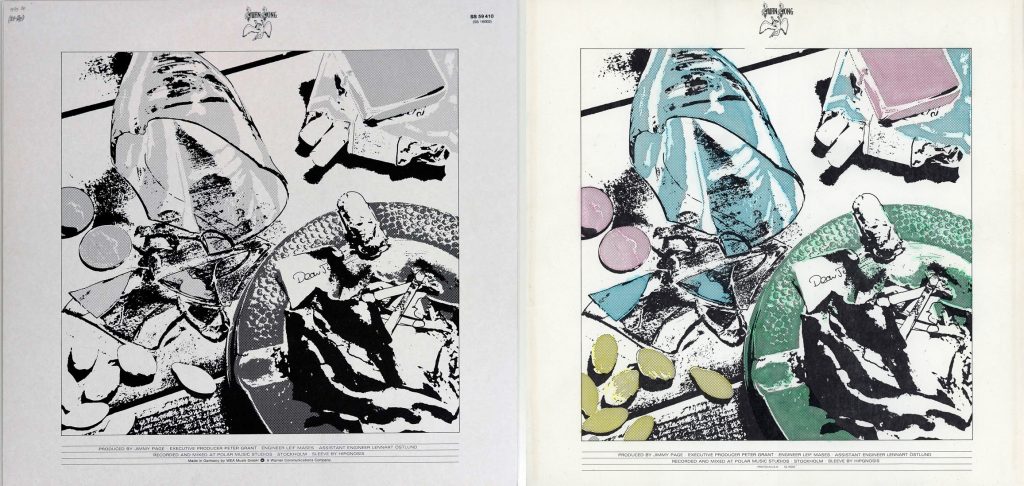
Audio Eggs
As well as the eggs hidden away in the artwork, music often has eggs hidden in the actual music.
Some of these eggs are quite obvious, whereas others aren’t so in your face until someone points them out.
Empty Spaces by Pink Floyd contains one of the more obvious eggs. Taken from the 1979 album The Wall, if you listen carefully, you can hear Roger Waters saying “Congratulations. You’ve just discovered the secret message. Please send your answer to Old Pink, care of the funny farm, Chalfont…”
A less obvious hidden track is the one from the band Tool on their album 10,000 days.
On the album are 3 separate tracks (Viginti Tres, Wings for Marie, and 10,000 days) which if played simultaneously reveal a completely new track.
Other Eggs are often found in the form of tracks which are played many minutes after the main album has finished. One example of this is the track Rage by Nirvana. On the original album, the song ends, yet the album doesn’t. After roughly 10 minutes of complete silence, the song Nameless Endless plays, which caused quite a shock to unsuspecting listeners when the album was first released.
In other cases, there are subtle hints to connect albums together – or at least to keep playing the album.
Take Pink Floyds album The Wall as an example, at the very end of the album where the track Outside the wall finishes, the words “isn’t this where…” can be faintly heard.
This sounds quite odd, until you realise that the 1st track of the same album – In the Flesh? starts with the faint words “…we came in” – A suble meaning that the story being told by album never actually finishes, and is destined to repeat.
In another example, the song Mr Blue Sky by ELO ends with the words “Please turn me over”, which on the single version sounds out of place. It’s only when you know that the song is the last track on side 1 of the vinyl version of the album Out of the blue that it makes sense.
One of my favourite audio easter eggs though is the one of the bells from the first and last Black Sabbath albums.
The first Black Sabbath album Black Sabbath opens with the tolling of some church bells and the clap of thunder from a looming storm.
The very same recording of the bells & storm closes the song Dear Father which is the final track of Black Sabbaths last studio album 13
Quite a poignant way to end an amazing career in my mind.
Hidden Eggs
It’s not just the album art or the audio which contains Easter eggs – on many vinyl pressings, you can often see hidden messages left there by sound engineers and press operators.
These eggs can be seen on the run-out section of the vinyl when held under a bright light.
On the Deep Purple album Fireball – the word Porky can be seen – Who was porky? Whoever they were/are they are someone forever associated with album, and as such are a part of the lore of that release.
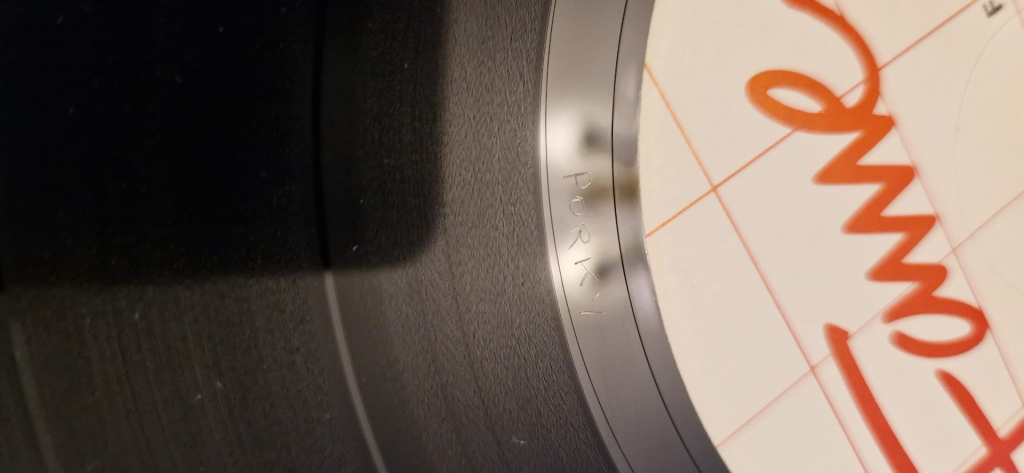
Another Deep Purple album sees a number of run-out messages. The double album Made in Japan has a message on three of the four sides:
Side 1 sees the word KIP:

Side 2 has the words Delta & Pork – Could this be the same “porky” from Fireball fame?
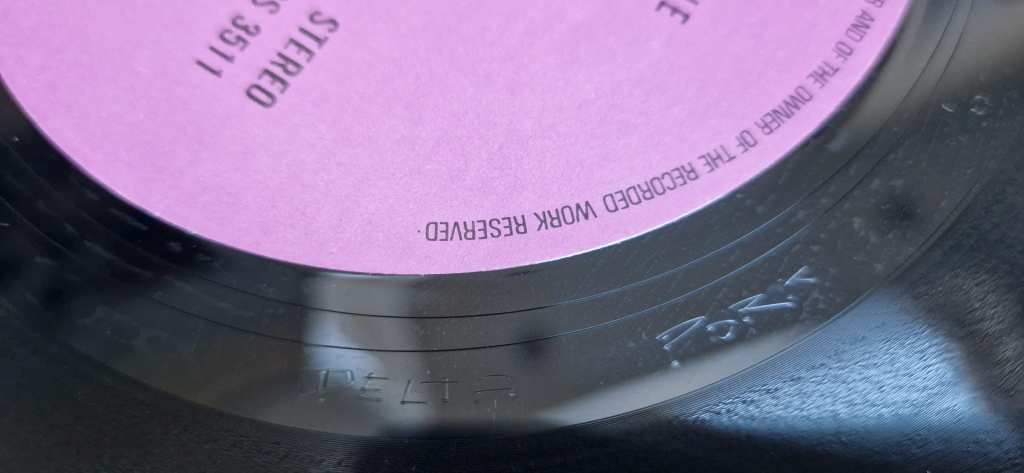
Side 4 has the word Peckie

The debut album by Queen also has some run-out messages, but only on the original Trident release – the message is not included on the later EMI version.
One side 1, we see the name Nick W

One side 2, we have the name Blair

No messages on the EMI pressing

The Iron Maiden album Piece of mind has the word Utopia scribbled in the run-out which included the letter U as a stylised harp.
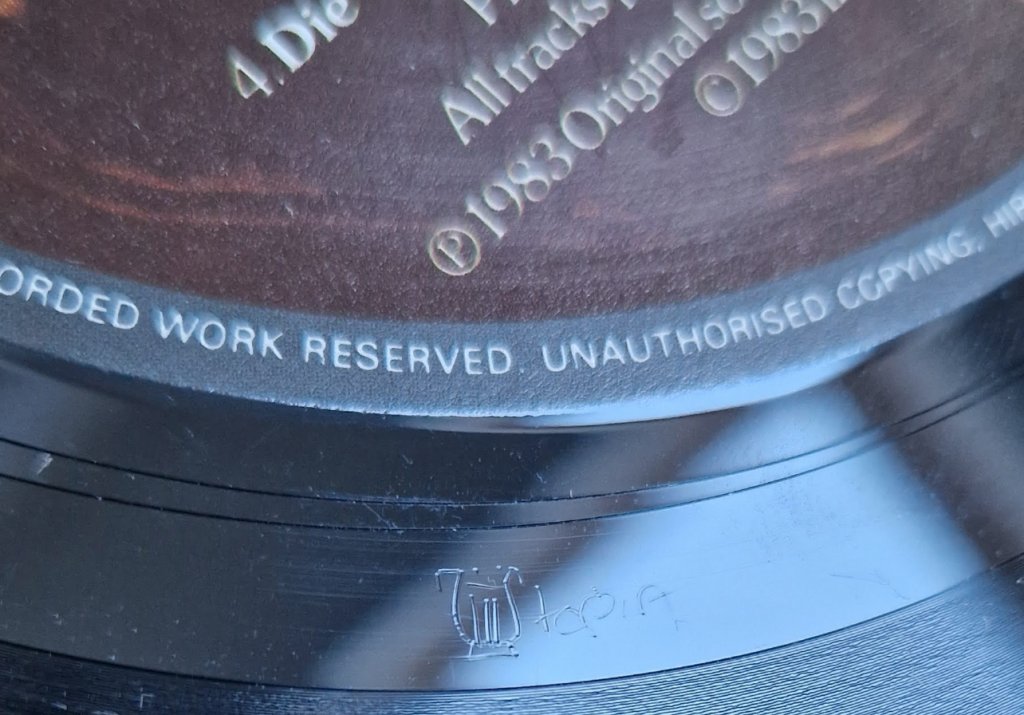
There are many such examples as these on countless vinyl albums and singles which all add to the experience of owning the physical versions of the music we listen to.
CD eggs
It’s not just Vinyl versions that have Easter eggs – CD’s occasionally hide some surprises.
The album Kid A by Radiohead held a hidden surprise underneath the CD tray. When removed, the tray revealed a second album booklet featuring bizzare lyrics and poetry.

A number of albums released on CD also have hidden data in the Pregap area.
The pregap is an area of the CD which holds digitised data to help systems understand the rest of the album structure (track names, timings, etc.)
By placing the CD in a suitable CD-player and holding the rewind button to go past the start of the 1st track, you can hear the hidden tracks sometimes placed by artists in the pregap.
Unfortunately, most CD player manufacturers have to build their products to a standard known as Red Book audio, and pregap audio goes against those standards.
As a result, the majority of modern CD players and computer optical disc drives cannot read pregap audio. ITunes and other media players services won’t recognise data in the pregap area, and the hidden tracks are typically not available for streaming from online music services.
It’s all these reasons why I will always prefer physical music over streamed music from Amazon, Deezer, or Spotify, etc. Plus – if I own the physical version, it can’t be taken from me if I no longer wish to subscribe – unlike streaming services.
In tomorrows post, I’ll look at the Easter Eggs hidden in computer software.












